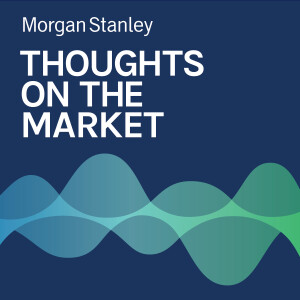
Asia’s economic recovery could continue to be out of step with the rest of the world. Hear which countries are positioned for growth and which might face challenges.
----- Transcript -----
Welcome to Thoughts on the Market. I'm Chetan Ahya, Morgan Stanley's Chief Asia Economist. Along with my colleagues bringing you a variety of perspectives, today, I'll discuss 2024 Economics Outlook for Asia. It's Tuesday, December 5 at 9 a.m. in Hong Kong.
It used to be the case that business cycles across Asian economies were in sync. But after the Covid shock, global trade and global growth have moved out of sync. Growth in Asia has diverged at times from global growth momentum.
Moreover, in this cycle, the inflation picture is very different across Asian economies. So in contrast to previous cycles, we have to be more focused on nominal GDP growth. Real GDP growth, which is nominal GDP growth, adjusted for inflation, has been divergent across Asian economies during this cycle. And we think Asia's recovery will remain asynchronous vis a vis the rest of the world. Looking at the three largest economies in the region, we are more constructive on the outlook for nominal GDP growth for India and Japan, while we think China's nominal GDP growth will be constrained.
Why is this? First, we think China is facing a challenge in managing aggregate demand and inflationary pressures from deleveraging of local government and property companies balance sheets. Policymakers have embarked on coordinated monetary and fiscal easing, which would help to bring about a modest recovery in 2024. But the deleveraging challenges are intense, and so the path ahead will still be bumpy. Moreover, we believe that inflation will remain low, which means corporate pricing power will be weak, and that could present a challenge for corporate profitability.
Second, we are seeing a momentous shift in Japan's nominal GDP growth trajectory. Japan has exited deflation decisively, supported mainly by its accommodative policy and with some help from global factors. Against this backdrop, nominal GDP growth reached a 30 year high in the second quarter of 2023. Improving inflation dynamics mean that we see that Bank of Japan exiting negative rates and removing yield curve control in early 2024. But we believe the BOJ will not tighten macro policies aggressively, which should ensure a robust nominal GDP growth of 3.8% in 2024.
Finally, we believe that India remains the best opportunity within the region. Nominal GDP growth is expanding rapidly and we think a pickup in private capital investment cycle will sustain productivity growth. Policymakers have been implementing supply side reform and that has already boosted public CapEx. A virtuous cycle is already underway in India and nominal GDP growth will be expanding at double digit growth rates.
To sum up, Asia's recovery remains asynchronous relative to the rest of the world, and idiosyncratic drivers still matter more during the cycle. We are constructive on the outlook for India and Japan, however, structural challenges will constrain China's growth path.
Thanks for listening. If you enjoy the show, please leave us a review and Apple podcast and share Thoughts on the Market with a friend or a colleague today.
More Episodes
 2024-04-23
2024-04-23
 2024-04-22
2024-04-22
 2024-04-19
2024-04-19
 2024-04-18
2024-04-18
 2024-04-17
2024-04-17
 2024-04-16
2024-04-16
 2024-04-16
2024-04-16
 2024-04-12
2024-04-12
 2024-04-09
2024-04-09
 2024-04-08
2024-04-08
 2024-04-05
2024-04-05
 2024-04-04
2024-04-04
 2024-04-03
2024-04-03
 2024-03-27
2024-03-27
 2024-03-26
2024-03-26
Create your
podcast in
minutes
- Full-featured podcast site
- Unlimited storage and bandwidth
- Comprehensive podcast stats
- Distribute to Apple Podcasts, Spotify, and more
- Make money with your podcast
It is Free
- Privacy Policy
- Cookie Policy
- Terms of Use
- Consent Preferences
- Copyright © 2015-2024 Podbean.com





